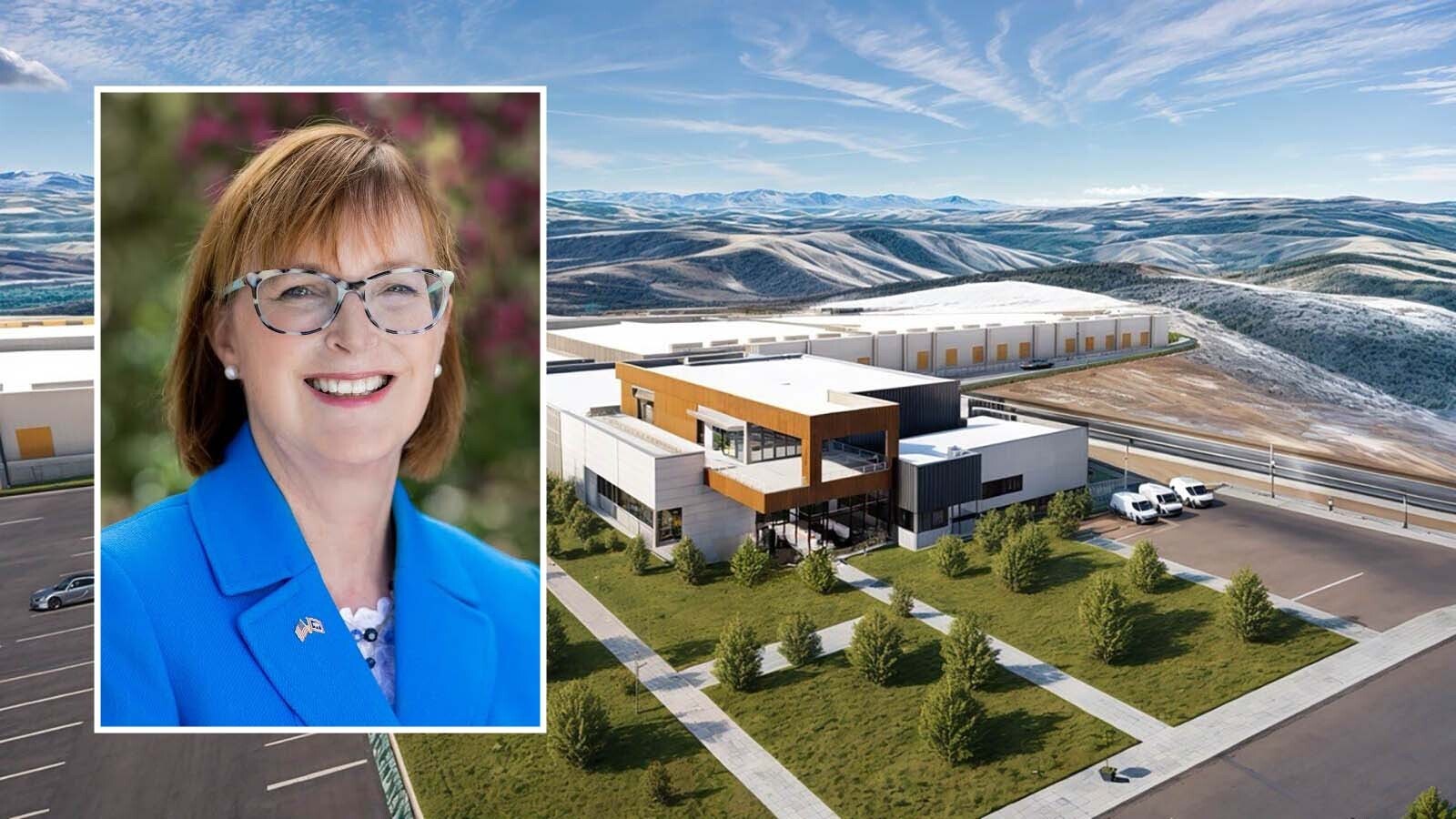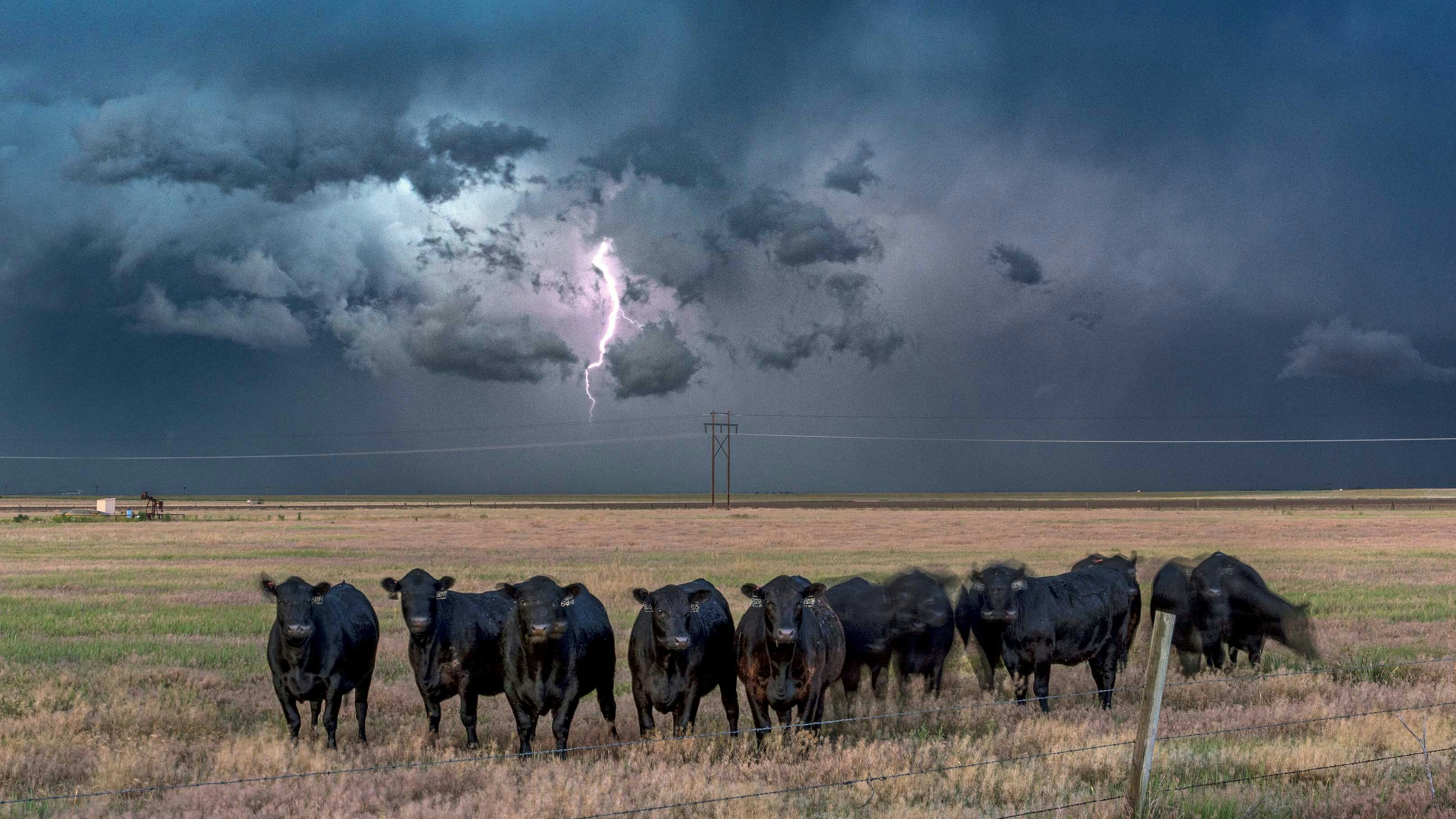Drought might always be a day away for ranches in the semi-arid West, but farmers are eternal optimists.
It doesn’t matter how bad it gets, most of them will tell you that things are looking good, even as they’re looking up at a clear blue sky wondering when that next rain is going to fall.
Take Johnson County rancher David Belus.
He lost nearly 50,000 acres of pasture to wildfire last year and could only watch as dirt devils played across the land, carrying topsoil away.
But the perfect timing of recent moisture has him optimistic for the spring, even though his ranch still lies in an area of moderate drought for now, according to the U.S. Drought Monitor Map.
After talking with a soil scientist about his burned acreage, he believes he’s in “really good shape” heading into the growing season.
“I had him come look at what we had burnt, and he told me it did not hurt the roots,” Belus said. “And so, he thinks we’re going to be fine.”
That has Belus hopeful that his ranch’s recovery is really just a matter of timely rain and letting the land rest from April through July 15.
After that, he’ll reassess and see what it looks like.
“I might not graze ours this year,” he said. “I might defer it again (next year), because I don’t want to graze it during a growing season.”
Belus’ larger concern is the recovery of sagebrush on his property, because that takes so long to grow.
About 900-some acres had to be re-seeded, Belus said, and sagebrush is a notoriously slow grower. It will take two years to get a mere 4 inches high.
“I’m all about sagebrush,” Belus added. “Contrary to what most people think, it’s good. It slows the wind down, it captures snow so you have more moisture, and it gives wildlife and calves and things like that a place to lay down. And we want that sagebrush to come back for the sage grouse also.”
Scrambling For Forage
Micah Most works with a lot of the farmers and ranchers in Johnson County as a University of Extension agent for agriculture and natural resources vegetation.
He’s a bit less optimistic than Belus and sees a much bigger picture of complex challenges ahead.
All the things that could happen are a bit like a Rubik’s Cube when it comes to complexity. Endless combinations are possible — but only certain ones will solve the puzzle and put producers right.
The Horse Draw Fire last summer covered nearly 175,000 acres in Johnson County, affecting between 35 to 40 individual property owners. Most of that land is private, though some was on BLM or state lands.
Some producers were hit harder than others, Most said.
For a few, fire only affected the edges of the property, while others lost nearly everything they had — grazing land, fences, corrals, outbuildings. One property owner even lost an entire bridge.
“No one lost their home and we’re thankful for that,” Most said. “No one was hurt or died, and those are major blessings. But in terms of livelihood, the impact was pretty extreme for a handful of folks.”
Losing all their winter feed to fire had some producers scrambling to either find hay to take its place or an alternative grazing situation. Both cost additional money.
“I know of at least a few who took their cattle into a dry lot situation, which is costly and time-consuming,” he said.
A dry lot is a bare, fenced-in area for livestock where they are fed and watered.
Most also knows of some who took their animals completely out of the state, because they couldn’t find grass or another suitable situation.
Not many animals were lost outright to the fire, since grazing leases had a lot of cattle or sheep still out on the mountains, away from the fires. But for those who did have livestock in the path of the fire, there was a mad, last-minute scramble to get them from harm’s way.
“They were literally running ahead of the fire in some cases to get their animals out of the way,” Most said.
Those animals suffered smoke inhalation, burns and stress, all of which contributed to weight loss at a time of the year when some ranchers are looking to go to market and sell some of their cattle.
And some cows would have been carrying calves. The stress on the animal at that critical time could lead to productivity losses in the fall after the calves are born, if the calves don’t put on weight as expected.
Invasives Are Lying In Wait
Available and affordable forage is one of Most’s top concerns for the coming season.
Ranchers who have lost pasture to fires will need that to get through the summer, given that they’re going to have to rest their burned acreage if they want it to come back.
But alternative feed sources are going to cost a lot more than just turning animals out into their normal pastures — and if demand is tight, those costs could get even higher. But there is no help for it, as the resting period is critical, Most added.
One way to look at a fire is that it’s like a gargantuan grazing event, one that takes everything down to soil level. Roots have been damaged to one degree or another and, in some cases, killed outright.
“Everything will need rest to build back root reserves,” Most said. “And so, I’ll be curious to see (how the recovery goes) because the way the fire moved through in some places, it was very consistently hot, but, in other places, it was more of a mosaic burn.”
Those areas where the fire wasn’t consistently hot are likely to be first to come back, Most said.
“But it’s also going to be interesting to see the impact of the wildlife,” he added. “They’ll be really attracted to that young, green growth this spring.”
Another big concern ahead, Most said, are invasive weeds. Burned pasture is a blank canvass waiting for things like cheatgrass, ventenata, and medusa head.
“There are some major concerns that suppression efforts on the fire line may have transmitted some of those invasive species to places where they didn’t previously exist,” Most said.
Keeping the upper hand on that is a matter of good timing, but it’s also a matter of resources. If there’s no funding for large-scale suppression efforts, the opportunity to nip such plants in the bud early may be lost.

Pray For Rain
Buying forage to keep a cattle operation going is a step that eats into an already razor-thin profit margin.
Because of that, there’s another option some may decide to try. Reducing the overall herd.
Most knows of at least one family that has already done that. And a market that’s right now higher than usual could encourage more to do the same, even though it also makes recovery much harder down the line.
The next three months will be the most critical to recovery, Most said.
April, May and June are Wyoming’s wettest months, and as such will absolutely determine how well farmers and ranchers in burned zones can recover. A drought on top of fires last year could sink some operations.
“At this point, we’re just kind of waiting to see how the moisture patterns come through,” Most said. “That’s really critical for our native ranch grasses. Especially in this part of the state, most of our grasses are cool season species, so they hit their peak in terms of vegetation production in June, and maybe early July at the latest.”
These uncertainties are why Most is glad the Johnson County Relief Fund was able to hold back a small portion of donations, in case long-term needs arise.
“Depending on how spring precipitation works out, there’s the potential to distribute the remainder of the funds,” Most said.
The relief fund didn’t shirk any pressing needs though.
“We awarded funding of roughly 170,000 to 22 applicants,” Most said. “And we tried to target short to long-term needs.”
Most of the grants were for replacement of infrastructure not covered by other relief funds or assistance available from agencies like National Resource Conservation Service and Farm Service Agency.
Renée Jean can be reached at renee@cowboystatedaily.com.








